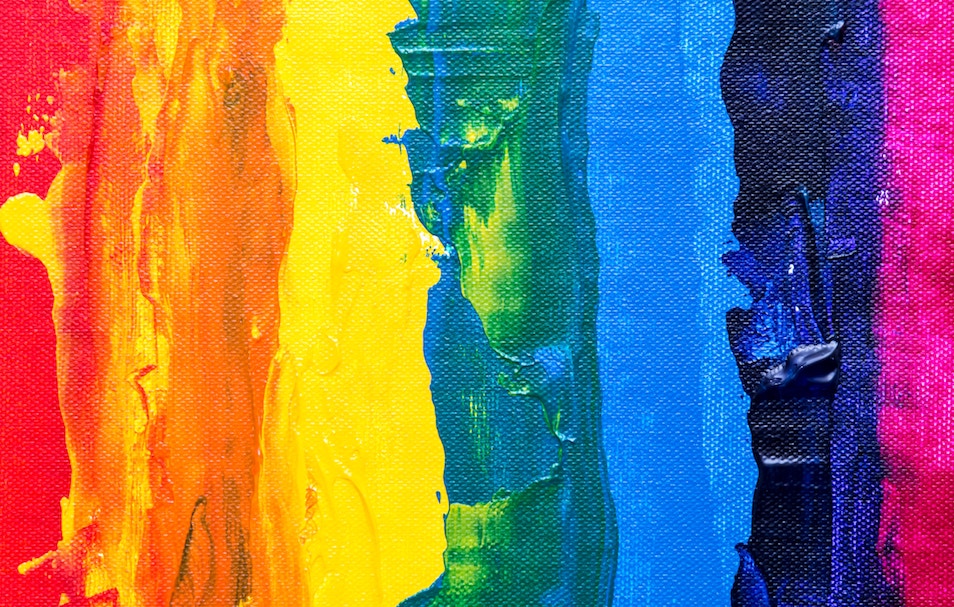The rainbow we can’t see
Our rainbow community members who identify as queer, gay, lesbian, trans, bi, asexual, experience a journey of being different that is quite unique. That is, they don’t always immediately have an “outward” expression of “I’m different.” Many of them can “pass” as straight, which holds both a bizarre type of privilege as well as a painful ongoing feeling that something is being hidden. In other words, they often share that they internally know that they are different, but that the way that are perceived might not match their internal experience. For example, they might hear an insult about something “being gay and lame” from a couple of colleagues. Or they might be out with friends, and everyone is sharing their thoughts about marriage, and then they’re asked about their ‘opposite sex’ ideal partner, assuming that their current or ideal partner is, in fact, a member of a particular gender.
That is to say, unlike people who have a “different” skin color or come from a different place than the majority culture, many folks who identify as queer have lived around assumptions made about them in a way that they haven’t been made about members from some other minority groups. And so, for better and worse, our LGBTQA community members have learned to maintain their unique colors internally until they are able to celebrate them externally. And that’s the lesson of their journey.
Pride Month represents being different and doing our best to accept and celebrate it
We’ve all felt “different” in one way or another throughout our lives. For the immigrants of us, it often entailed some nagging feeling of “I don’t belong here in this country, in this language, in the norms and customs that everyone else takes for granted.” For those of us with a skin color that doesn’t match most of our peers, it might have involved feeling like no matter what, we’ll never be as fully accepted for who we are. For those of us who have a strong creative bend but have been surrounded by more straight-forward talkers and doers, we might have a fear that we feel things “too strongly” or that we’re “too much” for people. This is true about any parts of us that might feel “not cool” or “not normal,” or however we see it. It takes time to begin accepting the emotional, creative, sexual, ambitious ways in which we are not like those around us. It’s worth the time and work, though, because it gets us from shame and feelings of inadequacy, to an experience of joy and peace of mind, and eventually — to a freeing celebration of self and other in all the ways in which we are different and the same, inside and outside.
The colors of the rainbow in the world around us and in the world inside each of us
What Pride Month represents to me is not just the colors of the rainbow in the world around us, but also the different colors within each of us. My queer friends have encouraged me to feel and express that rainbow with self-compassion and dignity. To accept my moments of feeling too much, to sit with my experience of never fully thinking that I belong in a country I wasn’t born in, and to love and hold space for the different expressions of self and heart of those around me.
In a similar fashion, this month can be your opportunity to reflect on those colors inside of you that you have perhaps missed. Perhaps seen them as “too much” of something instead of the unique qualities that got you that gig in Kentucky’s Beatles Festival, that got you that fantastic husband, that got you the ability to feel sweet gratitude every day you are here. With time, your ability to notice these parts of you will turn into acceptance and then into a celebration.
For our LGBTQA community members, this process has been and continues to be a non-linear challenge and ongoing effort to work through the internalized messages of not being good enough, not having a chance to belong, not being truly seen.
To those beautiful souls, who’ve spent a lifetime of working towards self-acceptance in a world that did not necessarily want them to reach it, I dedicate this post and my celebration of colors and of love this month (and every month).
For those who are struggling with some pain around their coming out or are beginning to navigate what being a member of a sexual minority means for them, please do not hesitate to contact us here at WILA. Our team of compassionate therapists is here to help you through it.

